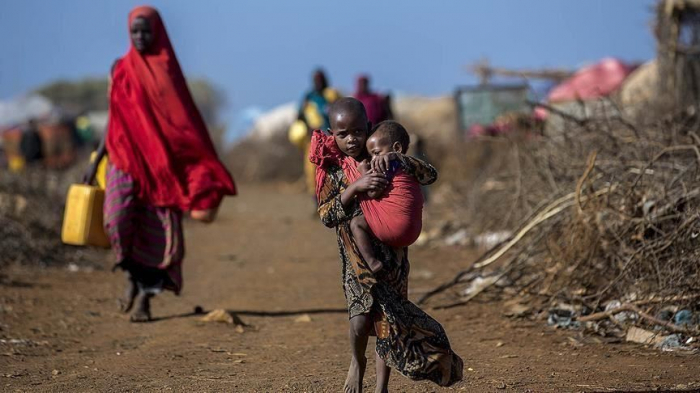More than 35 million people, including 6.7 million children, are currently unable to meet their basic food and nutrition needs, according to latest analysis from the Food and Agriculture Organization (FAO), the UN Children’s Fund (UNICEF), and the World Food Programme (WFP).
Numbers could rise unless urgent and long-lasting solutions to address the crisis are not delivered soon, they warned.
Edging towards catastrophe
The situation is particularly worrying in the Liptako-Gourma tri-border region between Burkina Faso, Mali and Niger, where 25,500 people will experience catastrophic hunger during the June-August lean season next year.
“The food and nutrition security outlook for 2023 is extremely worrying and this should be the last wake-up call for governments of the region and their partners,” said Chris Nikoi, WFP’s Regional Director for Western Africa Region.
“Strengthening the resilience of communities has to become a singular and collective focus for us all if we are to pull this situation back from the precipice before it is too late,” he added.
Food insecurity spreading
The UN agencies have urged governments across the region to ramp up support and investments in food security and nutrition programmes.
Despite factors such as good harvest prospects and favourable local cereal production estimates, food insecurity and malnutrition persist and are spreading from the Sahel towards coastal countries.
The crisis is driven by persistent insecurity, climate shocks, high food prices, the economic fallout from the COVID-19 pandemic, and the impact of the war in Ukraine.
Across Benin, Côte d’Ivoire, Ghana, Guinea, Guinea-Bissau, Liberia, Sierra Leone, and Togo, the analysis reveals a 20 percent increase in food insecurity in the last quarter of the year compared to the same period in 2021.
The vast Sahel region stretching west to east across the continent, is “teetering on the brink of full-blown catastrophe”, according to Robert Guei, FAO’s Sub-regional Coordinator for West Africa. In most countries, food availability is declining and fertilizer prices are rising.
“This could have a negative impact on harvests next year and worsen an already-grave situation for many rural communities,” he said, adding “we must act now to shore-up rural livelihoods before it is too late.”
Concern for children
The UN partners added that acute malnutrition in children under five is a concern, particularly in Sahel countries and in Nigeria. Rates are exceeding the 15 per cent emergency threshold in some areas in Senegal, Mauritania, northeastern Nigeria and Niger.
The global acute malnutrition rate also exceeds 10 per cent in many areas around the Lake Chad Basin, encompassing Niger, Nigeria and Chad, as well as the border areas between Burkina Faso, Mali and Niger.
Factors such as conflict, displacement, limited access to healthcare and other basic services, are among the underlying causes of acute malnutrition in under-fives, pregnant women and nursing mothers across the region.
Robust approach
Marie-Pierre Poirier, UNICEF Regional Director for West and Central Africa, reported that latest data indicates continuing unacceptably high levels of severe wasting for children in many countries.
“We need to scale up treatment and put much more attention on preventing child malnutrition through a multi-sectoral approach to reach every child,” she said.
The UN agencies and their partners are committed to addressing this unprecedented food and nutrition crisis through what they called “a robust food systems approach”.
This involves multiple and integrated programmes that provide food, nutrition, health, water, hygiene, and sanitation response, targeting children, women and other vulnerable groups.
They will reinforce and expand ongoing support to national social protection systems that are responsive to shocks and sensitive to nutrition for pregnant women, nursing mothers, young children and adolescents.
Building on existing systems at local, national and regional levels, the agencies will also scale up their medium to longer term solutions aimed at reinforcing resilience of crisis-affected communities, while supporting peacebuilding and peaceful coexistence.
More about:
















































